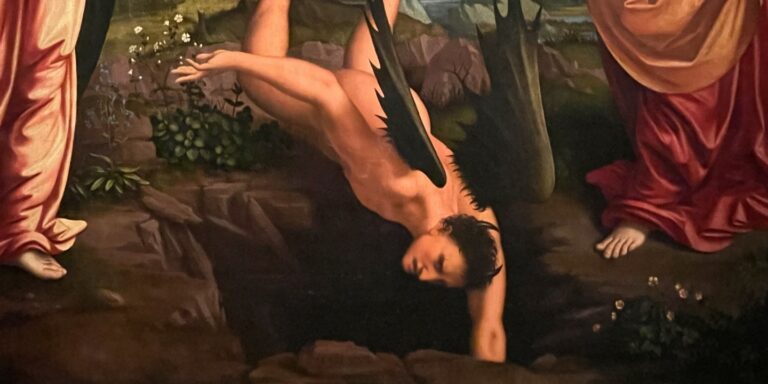
5/11/24
Saturday… I think.
My internal clock is still confused.
The bus tour begins today.
We will tour Milan.
I wonder how much I’ve seen already.
Yesterday I did 20,000 steps in the city.
Thursday I got to the hotel in the early afternoon. I took a quick shower.
And flooded the bathroom.
The shower was one of the modern things. Two curtains in a corner. A handheld sprayer you can slip onto a stainless steel pole. When I stepped in, I noted that the sprayer was aimed right at me. I had enough sense to turn it toward the wall. When the water warmed, I turned it back at me and soaked the airplane coating off me. When I was done, I parted the curtain and saw that the floor was flooded. The ceramic shower square was level with the floor and had no curb to it. By aiming the spray at myself, I could make sure that any water that missed me could escape under the curtain.
I pulled the towels off the rack—one big towel and one small towel—and began mopping. Soon they were soaked. I began wringing them out and mopping more.
Great. Just what I wanted to do to relax.
By then, I’d been out of the shower long enough to have air dried. I laid down and finished my weekly story and sent it over the Alps and France and England and the Atlantic. Over the Maritimes and south through New England. Over New York City. Then Pennsylvania and into Maryland.
Time to go outside. I’d done no research and had only a vague idea of what Milan had to offer.
I’d gotten a tourist map from check in. The clerk inked a circle around the hotel’s location. On the drive in, I’d noticed we were close to the imposing central train station.
I’d guess you’d call that fascist architecture. Other sources call it Second Empire style or Mussolini style—because he was closely involved in its construction as a monument to fascism. Wikipedia adds, “The station has no definite architectural style, but is a blend of many different styles, especially Liberty and Art Deco, but not limited to those. It is adorned with numerous sculptures. ‘The “incongruous envelope of stone” (Attilio Pracchi) of this gigantic and monumental building dominates Piazza Duca d’Aosta.’”
Those harsh winged horses atop the facade irrevocably struck me as militaristic.
The numerals MCMXXXI are emblazoned atop the facade. Add that to the context. That was Mussolini’s heyday.
But Frank Lloyd Wright liked it, at least according to architect Aldo Rossi: “They told me that when Frank Lloyd Wright came to Milan, and he came only once, he was really impressed by it and said it was the most beautiful station in the world. For me it is also more beautiful than Grand Central Station in New York. I know few stations like this one.”
From there, I headed down toward the center city.
I was more than a little dazed from the flight, lack of sleep and the stress of all the prep to get away.
The map showed a park not too far away. I aimed for that.
I stopped at a vintage pastry shop—mostly for a bathroom—but sat at a white linen table surrounded by white marble walls and other white decor. The menu was pretty vast. For some reason I ordered a “marmalade” tart. Apricot. And a large bottle of water.
I sleepwalked through the city and then headed back to the hotel to put my feet up. Evening was approaching. I’d brought a guidebook with me but of course failed to look at it before the trip or on the plane rides. I flipped through it looking for things to do the next day—my “free day”—before joining the tour. I was looking for things the tour was not likely to include.
…The Last Supper?!
Someone had told me months ago that it was difficult to get tickets to see it. I’d failed to heed this warning.
I googled, “Last Supper tickets.” Everything I clicked on said “Sold Out” or “Next availability: August.”
I dragged myself down to the lobby. Hotels often have access to sold out tickets—for a price. I was willing to pay. The desk clerk gave me hints on what I could try. They didn’t make sense. (Get there early for released tickets.) I was given the name of a tour company nearby that would open the next morning.
Hmmm… seemed like a low chance of success.
I went back to my room and googled more: “Last Supper last-minute tickets.”
More dead ends. More rabbit holes. Then a site popped up with “ONLY ONE TICKET REMAINING.”
Hmmm…
It didn’t look quite right. It didn’t look too dodgy either. The site had 4.5 Stars but only 9 reviews.
It was 80 euros for a guided tour.
What’s the worst that could happen?
My credit card could be compromised…
I clicked and paid. A few emails dropped in—a good sign.
“…Bring your passport. Be at Piazza di Santa Maria delle Grazie directly in front of the church entrance before 8:20. Your guide will be there holding a sign: VICTOR… If you’re late, no guarantees. … No shorts, ball caps, bare shoulders … “
Hmmmm… this COULD work.
I went to bed and awoke at 7:00. I took a shower—careful not to let water escape under the curtains. Skipped breakfast and headed to the nearby train station, where I saw lots of cabs the day before. I made a wrong turn and found myself on a street with dozens of uniformed children headed to a Parochial school. I used my phone to get me on the right path. Soon I was before rows of a couple dozen cabbies. Raised my hand to one. He shook his head and directed me across the street. The cabbie whose turn it was was a short burly guy with a long drooping gray-white mustache.
“English?”
“A leetle.”
I’d written the name of the Piazza on the back of my airline ticket. If I butchered the name verbally I might go to the wrong place.
“Ah, si, si. Piazza di…”
I kept looking at the time as the traffic crawled along.
Would I make it?
The roads around the church were blocked and the cabbie suggested I walk the rest of the way.
Great…
The sidewalk was packed but the little cobbled Piazza was virtually empty. I was 10 minutes early.
Am I in the right place?
There was no signage around the square that read “The Last Supper.” I wandered the perimeter looking for my tour guide.
Was this a scam?
An old bald man in a charcoal gray suit came out of the old stone office building opposite the ancient brick church wooden doors. He had a plastic watering can and proceeded to pour water along the cobbles abutting the base of his building.
“Weird,” I thought and continued my search for Victor in the tiny piazza. The 8:20 time was approaching fast.
At precisely 8:20, a tall bald man appeared near the church door. He flashed a paper sign that read simply: “Victor.” A little group of people appeared from various directions, and we all moved toward him. He didn’t check our tickets or ask names.
“Let’s go to the far side of the piazza. We won’t go for our tickets for another 20 minutes.”
The old man came out of the old office building carrying a broom this time. He began sweeping along the base of the building, though I saw no debris. The broom was worn almost to the handle. It was then clear that he was a simple fellow who took his duties seriously. He must have swept the base of his building a thousand times with that broom, which was so worn as to be virtually ineffectual.
Victor began his tour guide spiel. He was actually very good.
“The painting is not in the church but in the rectory adjacent to it. It was there the monks would take their meals… painting done 1493 to 1494… da Vinci used drywall as opposed to the traditional wet plaster.… It began fading almost immediately… eight meters by four meters high… Vasari [the great and ‘first’ art historian whose 16th century rare edition I recently acquired] called it the first piece of modern art… it depicts real people all frozen in the moment after Christ said: ‘One of you will betray me.’… anticipating the crucifixion soon to come… da Vinci put a nail in the wall where Christ’s right temple is. All sight lines go toward that point… Modern also in that none of the saints has a halo…”
We proceeded into the ticketing area. I showed my ID. A ticket was already printed in my name. It was then we began moving from one small space to another. Each was separated by automatic glass doors that wouldn’t open until it was our time to move to the next room. They only allow a couple dozen people in each group. Each group only gets 15 minutes in the refectory.
Eventually we got to rooms which opened—via glass walls—on the cloister. A couple dozen swallows were whirling above the church tower.
Very evocative.
“…This was bombed during the war. Fortunately they had the foresight to build a wall of sandbags in front of The Last Supper… Peter, John, Philip—all the apostles are caught in their moment of surprise or hurt. Thomas is doubting. Judas is clutching his little bag of silver, he spilled the salt—a sign of bad luck… the food on the table is a still life… Judas and Christ are reaching for the same plate. Christ’s demeanor is sadness… [another artist] made a copy in 1520. It is very faithful. It is in the London Royal Academy. The da Vinci had not deteriorated much in 20 years and so it provides much of what we know about the original…”
Finally the door to the refectory opened. The previous group was being ushered out via a back door. The space is dimly lit. Because the group was small, we were all able to move about and look at the masterpiece from different perspectives.
It was breathtaking.
I stood behind the barrier that kept us from getting too close. The figures in the painting are larger than life, and the base of the painting is maybe five feet higher than your eyes.
Then our time was up, and we went through a few more glazed areas before we exited through the bookshop and bathrooms.
I went into the church proper. It was not large, but it was moving. The exit near the nave opened onto another cloister where a permanent craft fair lined the walls—clothing, mostly.
I stepped out into the morning sun.
“Mission accomplished.” Anything else would just be anticlimactic.
I pulled the tourist map from my rear pocket to see what to do next. The huge Sforza castle complex was not far away and the phone guided me there.
It is an imposing edifice.
Towers soared to the sky. When I entered the courtyard, there were sign boards pointing toward different features and the numerous museums built into the castle.
What should I do that the “tour” likely wouldn’t do?
A tiny attraction built into a hole in the wall featured only Michelangelo’s final sculpture. His third (unfinished) Pieta.
I went through several other areas, including the “Castle Museum,” which held armor and sarcophagi, stained glass, frescoed ceilings with coats of arms and other symbols of family and power…
…And a few paintings. This Madonna and Child stopped me in my tracks. It looked so familiar.
“DC. The National Gallery. Ginevra de’ Benci,” I thought. But this wasn’t by da Vinci.
There were signs inside the castle for a “Painting Gallery”—Pinacoteca. I wandered through the complex looking for it—nothing.
Actually it was about a half mile away, I finally discovered.
Pinacoteca di Brera is in a former palace—up a long flight of stone stairs. The courtyard has an enormous sculpture of Napoleon idealized to make him look like a Roman god. (Napoleon is a frequent presence in Northern Italy due to his early conquests there).
The map had said there was also a library nearby. Braidense National Library. I had little hope of finding it, as libraries seem often to be hidden and unpopular tourist attractions. But there it was. Right next to the ticket counter.
Breathtaking.
A sign inside seemed to talk about poet visitors to Milan—“Poeti a Milano… da Lucrezio a Milton, a Lewis Carroll, a Kenneth Patchen…”
The gallery is huge with many rooms of mostly Renaissance art. I wandered from gallery to gallery, immersed in the warm and living colors of art of that era. I took many pictures and wish I could share them all with you.
But his Maddalena strikes me as being appropriate because she is reading a strategically placed book. Apparently there is a sub-genre of erotic religious art I wasn’t aware of.
From there la Scala was not too far away. Unfortunately, it was covered in scaffolding.
From there, I walked below an imposing statue of da Vinci and into the vast Galleria Vittorio Emanuele II. It is cross-shaped, and the interior is lined with high-end shops like Prada and Pinko, while high above an intricate web of glass and steel covers everything.
Back out into the light to the big square dominated by the beautiful cathedral. I was sure we would go into the church tomorrow with the tour, so I passed by and went into an exhibition of Cezanne and Renoir. I didn’t know they were buddies. The weird juxtaposition of the two styles—Cezanne’s austere blues and grays, Renoir’s red and pink fleshy women’s faces—was fascinating.
The day was aging. The meeting with the group and tour director was tonight at 5:00. Then dinner with them all at the hotel.
Groan. I don’t want to meet a bunch of strangers.
It was a long way, but I decided to explore on my way back.
On a narrow sidewalk on a narrow cobbled road with old buildings and shops closing in from both sides, I passed a sign:
Museo Poldi Pezzoli.
I googled it.
“They have a couple Botticellis!”
One doesn’t see many of those.
I turned and went in.
It was a mansion museum—the collection of a wealthy nobleman who kept his collection together by making a museum of his home.
Up the winding red carpeted steps to the “noble floor.”
It was a gem.
Then back to the hotel.
The group was to meet in the bar?!
Turns out we were a small group. Twenty-seven of us on a big bus.
What a blessing.
I had a proper martini. Dinner was not dreadful. Up to bed having walked over 20,000 steps in Milan.
May 11
Things began to speed up immediately.
The tour began at 8:00. “On the bus.”
We were driven to the castle.
The guide, however, enhanced my previous day’s solo visit with interesting data.
Da Vinci actually lived in the castle in his own tower, as he was a VIP and the Duke was his patron. There’s also a small gazebo in a huge castle keep where he spent time in contemplation. Just think of the deep thoughts conjured there.
From there, we went past la Scala and through the Galleria, the “longest crystal dome in the world.”
To the Duomo. “Not enough time to go in.”
What?!
Well, I messed that up. I’m glad I went into the galleries the day before.
Then we were released to get some coffee or shop.
“Meet under the statue of Garibaldi at…”
We tipped the “local guide” and went on our way.
I walked through an enormous Starbucks Reserve full of steampunk coffee roasting machinery. Then I made my way up to the Garibaldi square.
5/11/24
On a Bench Below Garibaldi—Milan
Rose red. Roses white.
Spring is maturing
it will soon reach summer’s adulthood
Seasons, the year’s quarterly clock.
A florist sits on a wire chair
He contemplates a pigeon
bobbing before his colorful kiosk
This little cobbled square
is dappled with sunlight
dropping between lime tree branches
The definition, in its home country,
of chiaroscuro
Leonardo painted nearby
A blessing to be forced to pause
before meeting my guide
Soon I will depart Milano
likely never to return
Our guide guided us to the bus while the mounted Garibaldi stared down at us.
Then out into the country.
“We will stop in the small town of Busseto… birthplace to Verdi… his work made him quite wealthy… political leader for the unification of Italy, as well…”
It was very quiet. We arrived during the riposo But there were some cafes open. I wasn’t hungry and chose to wander around. There’s a Verdi opera house with small plaques in the sidewalk carrying the names of the opera stars who have sung there. A large statue of Verdi, seated, stares intently down at you.
There wasn’t much else there, and almost everything was closed til 3:00. So I sat outside a cafe and ordered a beer. (The Italians bring you a free snack with drinks. I was given a bowl of potato chips and a smaller bowl of “crackers” shaped into a knot.)
Back onto the bus toward Parma.
Next stop was a cheese factory. Parmesan, of course.
It was not an imposing place. There was a McDonalds next door. But beyond that, it was all country.
In the first room, there was a short middle-aged man in a floor-length white apron. He was flipping the new wheels of today’s cheese—60 kilos each.
Apparently 1000 liters of milk reduces to two wheels.
Then down to the basement.
“You may not like the smell. Feel free to walk out.”
(I liked it. Smelled kind of like goat cheese.)
There, the wheels are soaked in brine baths. Eighteen new wheels are floated every day.
Then to a storage “barn” where aging wheels were stacked floor to ceiling. Row after row. The parmesan scent was a delightful immersion.
There’s a kind of motorized automated crane that lifts every wheel, wipes off any potential mold, flips it and puts it back before rising a couple feet to repeat the process on the next wheel.
Then we went out to a vine-covered patio for a tasting. We were given samples of 12-, 24- and 36-month-old cheese. There was a vast difference. The year-old cheese was soft without a whole lot of flavor. The three-year-old had a bit of crunch and very nutty, strong parmesan taste.
Heaven.
On to the city of Parma. Our hotel was very weird. A throwback. Lots of marble and brass. Some strange paintings in the lobby, including this creepy girl.
We only had a bit of time to put our feet up before about half of us went out for an optional “excursion.”
It was an old family farm down a long single road, which the bus more than filled. A country-style restaurant had been built many years ago. We were given a ravioli-making demonstration by the 5th(?) generation burly owner on the patio.
Then upstairs for dinner. I was surprised to see two Michelin badges on the door. The most recent 2020. More were inside.
The wine flowed. The platters came out and we were served one amazing dish after another.
Should I give you a list of what we had?
The little discs required translation.
“Castagno.”
I knew enough to know that meant chestnut. Little chestnut flour pancakes with a small dollop of ricotta on top.
The ravioli was like no ravioli I’ve ever had before.
The risotto defied my previous definition of the dish.
They kept offering more and more.
“No. THANK you.”
I think it was by far the best Italian meal I’ve ever had—and I’ve made expeditions to iconic places like i Ricchi in DC.
Back to the hotel, where the bar was abandoned. But a few of us sat down, and soon someone appeared. I ordered a beer.
A woman and her nephew joined us. She was in her 80s and a bit gruff. She asked where we were from. She and her nephew were from Switzerland, but she had lived most of her life in Sweden.
“But I am Czech. In 1968, when we had our brief freedom, my boyfriend and I drove to Venice for our first vacation outside of Czechoslovakia. Then we were told Russian tanks were coming. We went to watch TV in a bar and cried and cried. There was no going back. We went from embassy to embassy to see who would take. We decided on Sweden. The United States was too far away. I was young and didn’t want an ocean between me and my home…”
That night, I had a terrifying dream. It was more of a vision. I awoke and recorded some of it in what I hope will be a new Round and Round story.
I don’t know if I was haunted or possessed. Perhaps the creepy little girl and her doll had something to do with that.
I don’t know what it all meant. Perhaps I will when I reread whatever it is I wrote.
On Sunday, we went into Parma proper. We had a local guide whose speech was frequently punctuated with “ahem.”
She led us through the medieval streets and gave us history. Napoleon invaded here in 1796. When Josephine had no children the emperor shunted her aside and married Marie Louise of Austria. Marie Louise’s final home is here. I toured it during our free time. Mostly portraits in all kinds of media. Some Napoleon artifacts. The docent followed me around—the only visitor. I wonder what she would do if there were two visitors.
An art installation in neon tubes lined the facade of a museum high up. It was a T. S. Eliot quote from the Four Quartets.
The cathedral had a very plain facade, and we were told that was because tapestries were hung from it during holy occasions.
Back to the bus and out into the country. Poppies blow on the roadsides. Here, the red flowered plant is considered a weed.
The next stop was another family affair. A balsamic vinegar “factory.” It was founded in 1871 and is still in the same family.
A young man explained the process. It goes something like this:
Red grapes are boiled down. Ten gallons to three, 1000 to 300.
(Families will still start a small barrel when a girl is born. The balsamic will be ready by the time she is ready to marry.)
The big barrels age a year before they are decanted into smaller barrels—“batteries.” Unlike wine, these are stored upstairs because of the need to be hot in summer and cold in winter. There is a bacteria that lives in these that is local to Molena only. It would die anywhere else.
Once a year, they decant the top third off the battery and bottle it.
We were given little plastic spoons and were poured a few drops of various varieties:
Juniper kegs, cherry wood kegs, 20-year-old kegs, 100-year-old kegs.
The oldest they have is from 1871.
It was far different than any balsamic I’ve had in the States. And yet again, age improves things.
The tour ended with a “light” lunch of parmesan with balsamic drizzle. Locally sourced salad. A platter of meats; speck, prosciutto, salamis, a cheese board and thick pizza bread and focaccia.
From there, we went to the Ferrari Museum—which was a little strange. But the history there goes back to the 1940s, at least. The space was filled with the bright red race cars and sports cars, each generation getting more aerodynamic. The skinny Formula 1s they race currently were also on show.
Shops all around touted “Test Drive.”
Back for our second night in the Parma hotel.
Out for a bespoke tour of a castle with the same guide—“ahem”—we’d had earlier in the day and a dinner at a country Osteria offering Cucina Tipica.
To give you an idea of the vintage hotel, here are images of the keys—on very heavy “drawer pulls” that you leave at the desk when you check out. And one of the many old brass fixtures in the rooms. There’s a “radio” built into the wall on either side of the king bed—perhaps there was no television yet?
No hauntings that night.
But something else happened:
It is Monday morning. I awoke at 4:00. I knew there was no hope of returning to sleep. In Maryland it is still Sunday. Anyway, I need to be up at about 6:00 to pack and shower.
“Bags out by 7:00” are the instructions. You put your bag outside the hotel room door. (I must tell you about this hotel. I think it is haunted.) A porter will take it to the bus.
What to do?
Write?
I decided to read.
The only book I brought was The Little Prince. The book surprised me when I was sorting through carts last week. It was a binding I’d never seen before.
Lovely brown cloth.
When I opened it, I knew immediately by the quality of the paper it was a Taiwan pirated edition. But looking at the copyright page it says not. It reads: “Authorized.”
I don’t believe it.
Taiwanese printers would reprint bestsellers and classics without permission. Most I have found seem to have found their way to the states via Vietnam soldiers returning from the war. I think they would be sent to Taiwan for R&R. Rest and relaxation. It was a soldier’s “vacation” from combat. My oldest brother Joe did this in 1964 or 1965. When he returned after his 1- month tour, he brought us gifts. I got a little Seiko wristwatch. My mom got a fancy linen (or was it silk?) tablecloth.
I was nine years old. It was a confusing mystery to me. My big brother half a world away, flying helicopters and being shot at. He was shot down twice and brought some shrapnel back in his butt. Two Purple Hearts. That and other things made him resign soon after the Nam tour was over. He was going to be a career Marine officer. He was not the same brother who had tossed me in the air and told jokes around the kitchen table.
Ancient history.
The book…
The illustrations are dreadful reproductions—actually redrawn copies, I think. Black and white, sloppy, primitive.
Still, I chose this book to take to Italy to read.
I have not read the Saint Exupery (pronounced “san zoop,” I think) masterpiece for some years. But the unusual book came to hand, so I took that as a portent that it was time.
It resets me, I have found. Forces me to rethink my priorities.
“It is only with the heart that one can see rightly; what is essential is invisible to the eye.”
Well, I slipped the thin hardcover out of my backpack lying on the king bed next to me, and I finished the last pages that early sleepless morning in Parma, Italy.
“In one of the stars I shall be living. In one of them I shall be laughing,” he tells his friend, the stranded pilot. “And so it will be as if all the stars are laughing, when you look at the sky at night… You—only you—will have stars that can laugh.”
I am inspired.
I am sad.
For it is a love story—several love stories in one thin book.
It reminds me of… well, let’s not go there. But there were some glorious times in my life with The Little Prince.
There is an opera, sung in English, of the story. It is absolutely beautiful. I came across it accidentally at Wonder Book. It was in a box set of PBS productions which was sent to Emmy Award voters. I have never seen it anywhere else. Perhaps now you can stream it. Or it might be on Youtube.
Now I’m thinking I need to find it again. It must be in the drawers of the big green marble-topped sideboard below the TV. I hope it is. I despair if I can never see it again.
It was life-changing.
And then life changed back.
Well, now I have nothing to read. I’ll have to look for a bookstore. I came across several in Milan with books in English.
Crossing the Apennines.
I overheard one of the elderly Long Island Italians pronounce it, “App a neenies.”
Twists and turns. Tunnels. Cliffs.
Jagged peaks like fangs.
Over the spine of Italy, the Apennines, into Tuscany. We passed mountains that appeared to still have snow, but Giuseppe, our wonderful tour guide, told us those were Carrara marble quarries. Some 1000s of years old.
We were dropped at the walled city of Lucca in late morning.
It is a small medieval city. You can’t get lost because it is still encircled completely by its defensive walls.
Giuseppe gave us simple maps with highlights marked and turned us loose for four hours.
I wandered around—certainly not hungry—though temptation was everywhere.
The highlight for me was a Canova exhibition. He could make marble sculptures seem to be alive.
A favorite was Endymion. It triggered the memory of the discovery we made of a first edition of Keats’ Endymion which opens, “A thing of beauty…” and ends:
“There is not one,
No, no, not one
But thee.”
That night, we had yet another optional excursion. This time to a Tuscan family farm. We toured the vineyard and the olive presses. Eventually, we were seated at farm tables for a dinner with a dozen “courses” and six wines—three white, three red—plus Vin Santo (made with raisins and perhaps fortified—you dip almond biscotti into it) and a final shot of grappa (ouch!).
I paced myself well and had only small portions of each offering.
But twelve small portions add up. As do “6 + 1 + 1” varieties of alcohol. Some of the group danced, but I was far too toasted (and shy). I foresaw a broken ankle in my future if I did. But a couple octogenarian women put their canes aside and danced to Bee Gees and ABBA and Neil Diamond.
“Groan.”
Tuesday Leaving Lucca
About five minutes after getting on the highway to Cinque Terre, there was a loud SMASH sound from the front of the bus. The huge windshield was crazed with thousands of cracks. Some said it was a bird but it sounded like a much harder object.
Would we have to stop for repairs?
The bus continued.
Atop the Ligurian hills, small villages cluster about castles on various peaks. The stucco- and terracotta-roofed houses cling to the slopes below. It was a safe space in ancient times. If there was an attack, the villagers could flee to safety behind the castle walls.
The windshield was shattered. But apparently it wasn’t going to blow in. We continued and were dropped off where we would catch the tour boat to sail round the point into the Bay of Poets.
La Spezia Bay was also a rescue point for Jews being relocated to Israel. The ship Exodus sailed from here.
The boat was crowded with other tourists by the time we got on.
But it turned out ok. The guide was able to talk into all our ears wherever we were on the boat.
Byron, Shelley, Keats and other poets all spent time in and around the bay of La Spezia. The boat pulled close to the rocky shore to show us Byron’s Grotto where he went for inspiration (and, I supposed, assignations).
Many others have found inspiration here—think Virginia Woolf and D. H. Lawrence.
The Cinque Terre coast is lovely, but not as beautiful as Ireland’s many rocky coasts or Big Sur etc…
“Cinque” means “five”—five small, once remote villages below steep cliffs. They were actually “discovered” not that long ago by Rick Steves—the tourism book writer and TV promoter. Now it is flooded with tourists in season. May is “in season.” Our tour boat—one of many—held a couple hundred people. The tiny towns cling to the rocks next to the water. Switchback paths allow hikers to climb the slope—over a couple hours—to the summit. Terraced vineyards cling to the steep slopes and produce a Cinque Terre wine variety that some say has overtones of sea salt from the Ligurian sprays.
We were dropped off for visits at two of the five. That was more than enough. Not much to see but the back of other tourists’ heads. Little shops offering mostly junky tourist magnets and the like. Cafes…
The last “Terre” is Monterosso. We were dropped here for a couple hours for those that wanted lunch. I didn’t.
This had a beach, and I sipped a beer overlooking the sunbathers.
And with time to kill, I wrote a poem.
Then it was time to meet at the train station to get to Genoa.
I’ll stop here this week.
I wish I could share the hundreds of art works I captured with my phone.
And the food and wine varieties that expanded my palate to new dimensions.
And the sights and sounds and smells.
The history and cultural experiences.
So rich in so many aspects of life.
I’ll see how much I can squeeze into next week.
I am very lucky.
You should stop now. Appended below are a number of poems I managed to transpose from legal pads during down times on this trip.
(Don’t say I didn’t warn you)
4/30/24
April’s End
I dreamt we had a conversation
as natural as a half century ago
“Will I ever be close again?” I asked
I cannot recall your reply.
The room was too warm
and the woke me
The flannel sheets were confining.
I cast off the quilt
that yesterday I’d burrowed neath.
I rose to open a window
Pulled the chain on the ceiling fan.
I would like to sleep again
and remeet with you,
know your wisdom.
For I run hot and cool
whereas you ran deep.
Perhaps I’d meet my buddy again
whose secret was to laugh and be jolly.
Or my brother who I loved so much
though he only thought to tell me how wrong i was
Or the simple genius grayly hirsute
as the Old Testament God.
His secret was making machinery work.
Or my old mentor, with us still
though much of his spirit has crossed over.
There is no one left
Only myself
to be close to
Yes, I would return to sleep.
This consciousness is too disturbing.
5/4/24
The pad of paper rattled
in the dark bed next to me
“Awake and put words upon me.
Justify both our existence.”
I stretched, reaching for it
and pulled it crinkling to me.
The light popped on above my shoulder
and the blank canvas,
but for faint blue lines,
shown back at me.
A pen is always wedged in the journal
And here we are,
the three of us,
in the wee hours
the all the sane world sleeps.
The Muse called and I cannot rest
“Make my waking worth the price
that I shall have to pay in the morning.
Bring words and sense and color here
worthy of this late night’s borning.”
Well, here you are pen, page, mind.
Ink blue lines tween
fainter printed ones.
Now may I rest again
and not waken to your rattling crinkling call.
8/22
To walk the path alone
Narrower. Narrower.
Darkening. Darkening.
Quieter. Quite.
Is there an end in sight?
Just ahead
where the darkness becomes black?
9/6/22
Wound tight in the black night
Heart and soul pleading for peace
3/8/24
Tired tired tired tired to my soul
Tired from my fingertips to my core
Sore achy pained limp
My head heavy on the soft pillow
hoping morning’s light doesn’t come
It is a cold world out there
the bed in here is warm
3/26/24
Alive in the once distant future
an unimaginable lot I’ve become
Who is that stranger in the mirror
The full moon rises outside my window
That, at least, is unchanged for millennia
Cold spring air
Warm blankets and sheets
4/7/24
Do I miss you?
No. I see you every night
When my eyes are closed
and I’m bundled under blankets
I travel to that world
where you and I are one again
When the sun passes
and light pours in
the bed is warmed by that
My eyes open to the day
I see the empty bed
and I miss you
4/13/24
Dawn don’t come
I would sleep more
Stay dark and quiet
No bird song break
to stir my soul
I would remain in that other world
Rest and dream
Recharge the body
tired and sore
Dawn don’t come
and ruin my rest
I would stay
Keep day away
3/26/24
A full moon cushioned on silver clouds
looks in my window this cold night
I feel it tug at the seawater which fills me
Is weight a component of gravity?
My feet feel heavy as they tread
this rough futile earth
The cold white light bathes me
The ghostly shadow I cast me behind me
dogs my every step
Take your beauty below the horizon
I prefer the dark
You reveal too much
4/20/24
The faces fly by in the dark
In dreams the dead return to life
The living appear as though we’d never parted
[They appear as though we never parted]?
Nighttime is when the impossible makes sense
I can see them and sometimes hear
To touch is a rare gift
Taste and smell are not senses in the blackness
4/24
In the silent darkness
my hands clasped over my breastbone
I contemplate the small world I rest in
Fingers intertwined. Knuckles. Sinews
the rather tough flesh anterior
There is nothing but thought
“There is a full moon above those clouds
It waxed yesterday
It will wan tomorrow.”
Hands clasped there is only thought
Am I awaiting an epiphany?
Or just letting time pass;
sleep to come; consciousness end?
5/11/24
On a Bench Below Garibaldi—Milan
Rose red. Roses white.
Spring is maturing
it will soon reach summer’s adulthood
Seasons, the year’s quarterly clock.
A florist sits on a wire chair
He contemplates a pigeon
bobbing before his colorful kiosk
This little cobbled square
is dappled with sunlight
dropping between lime tree branches
The definition, in its home country,
of chiaroscuro
Leonardo painted nearby
A blessing to be forced to pause
before meeting my guide
Soon I will depart Milano
likely never to return

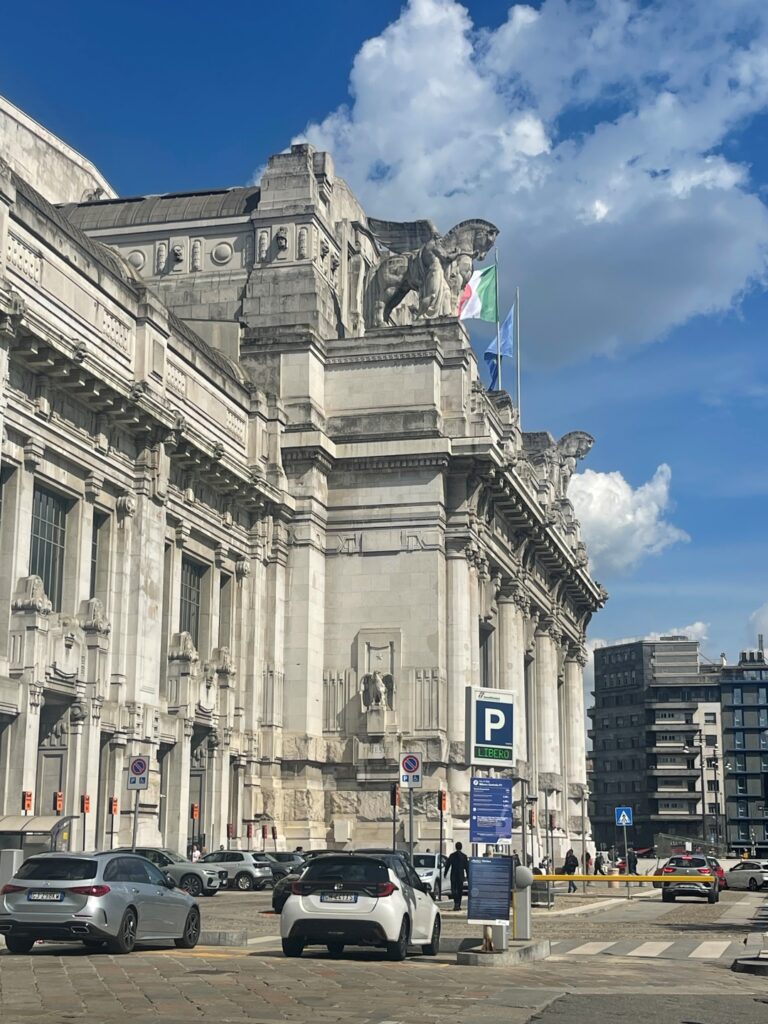
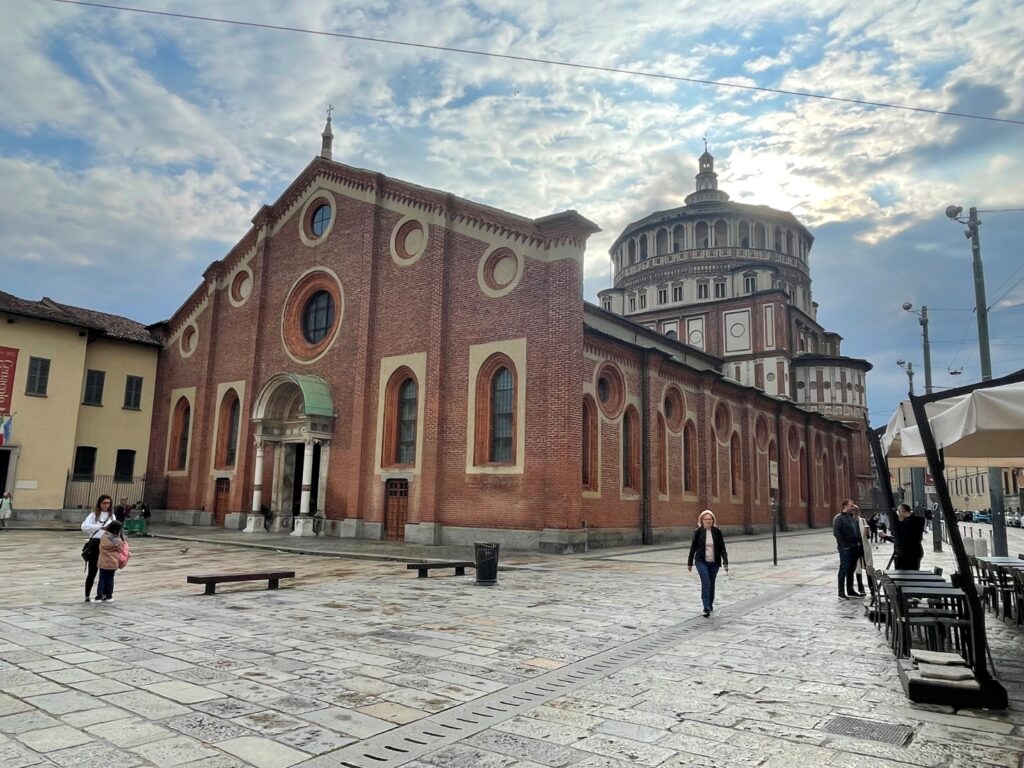
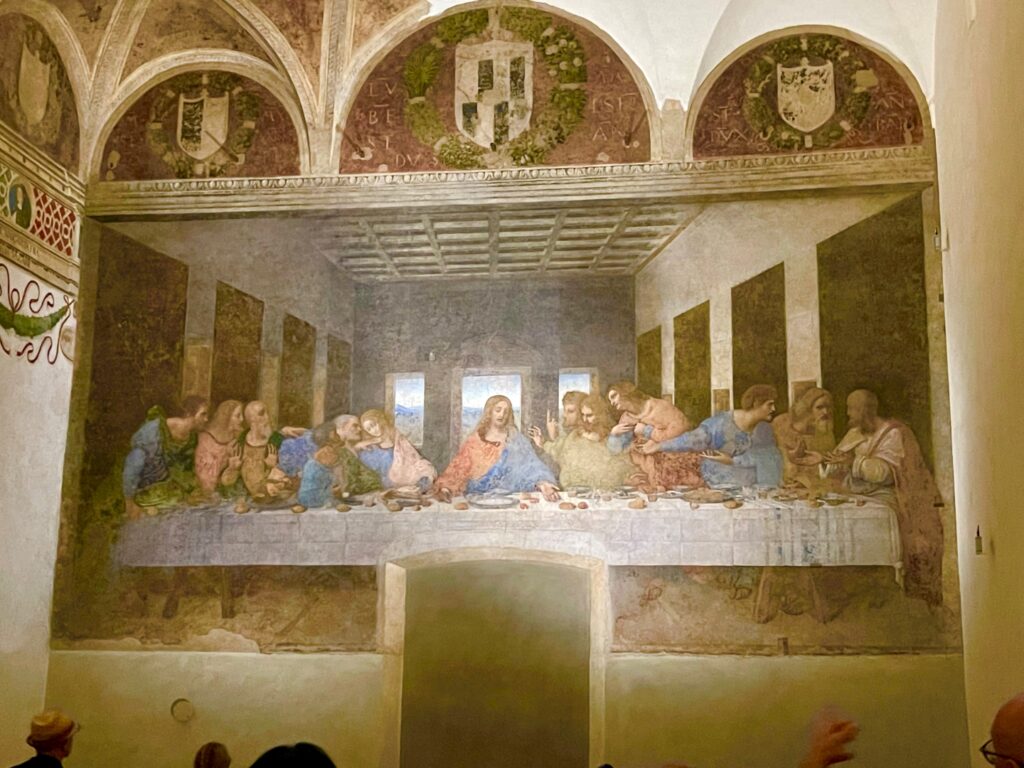



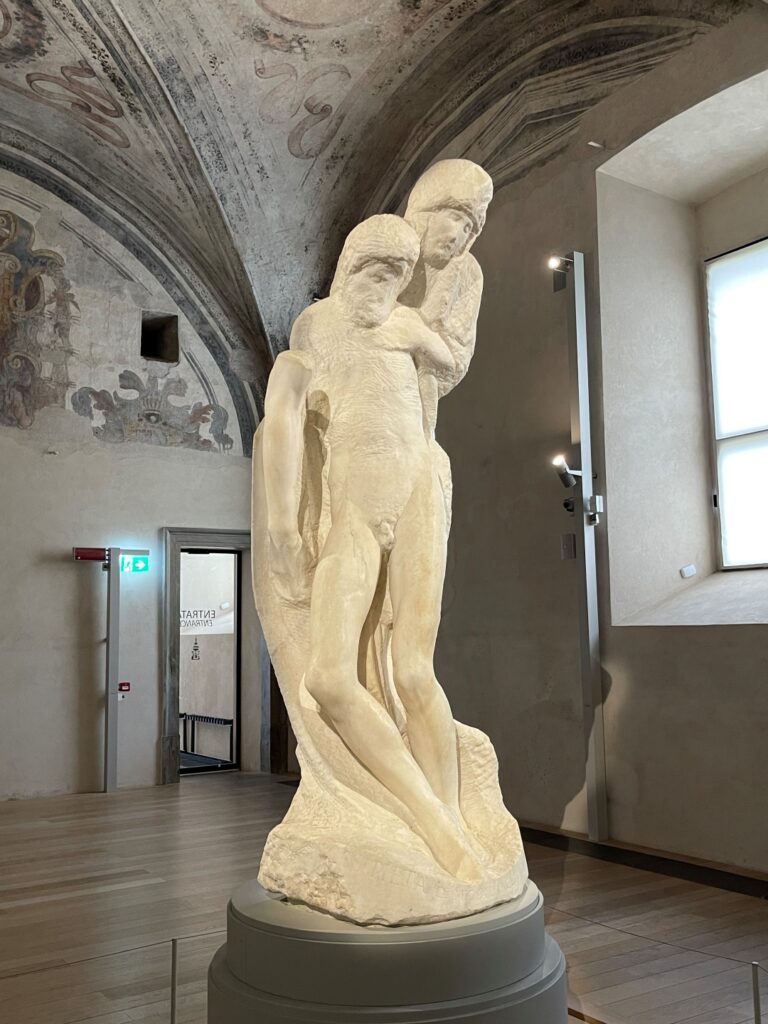
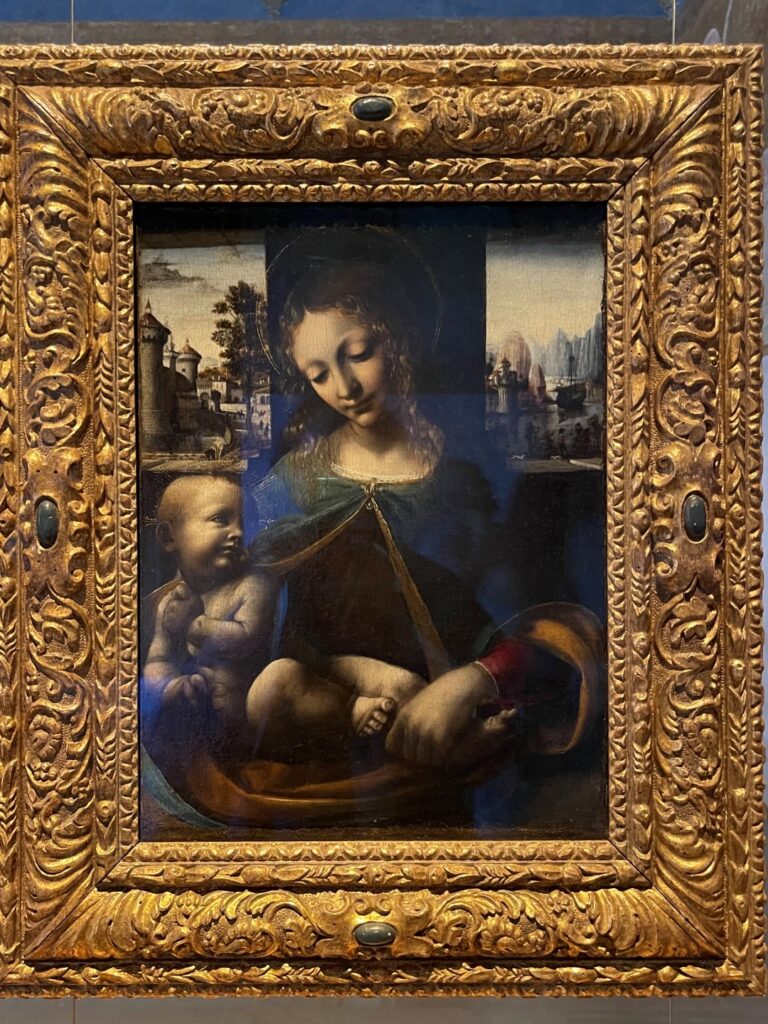
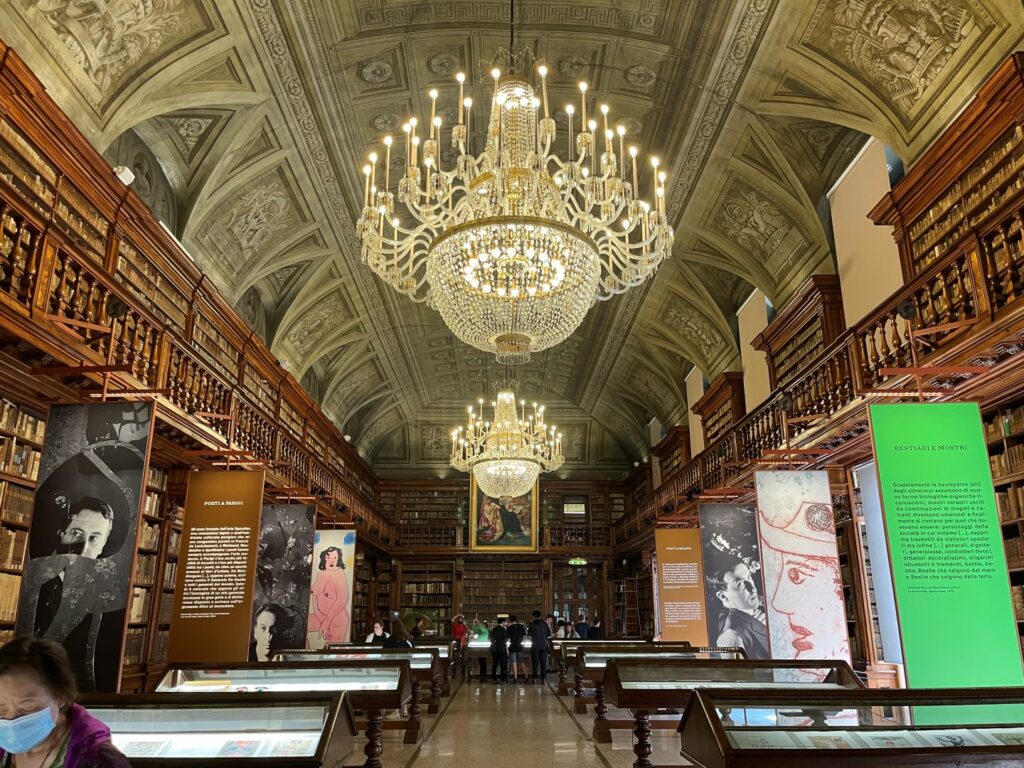
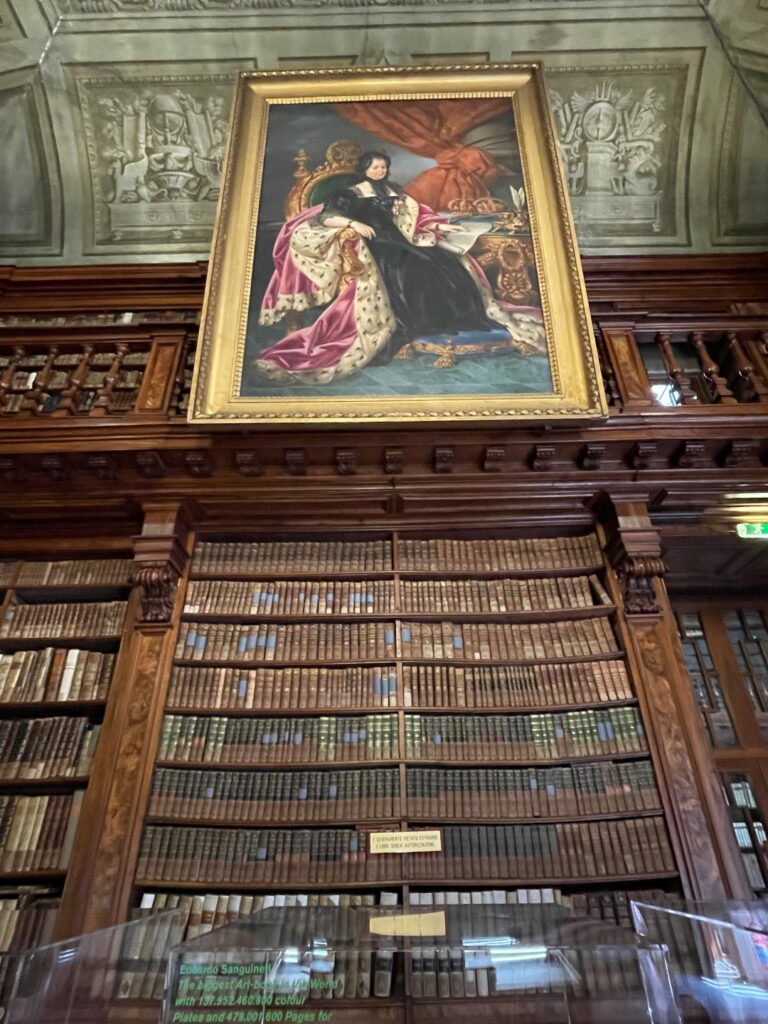
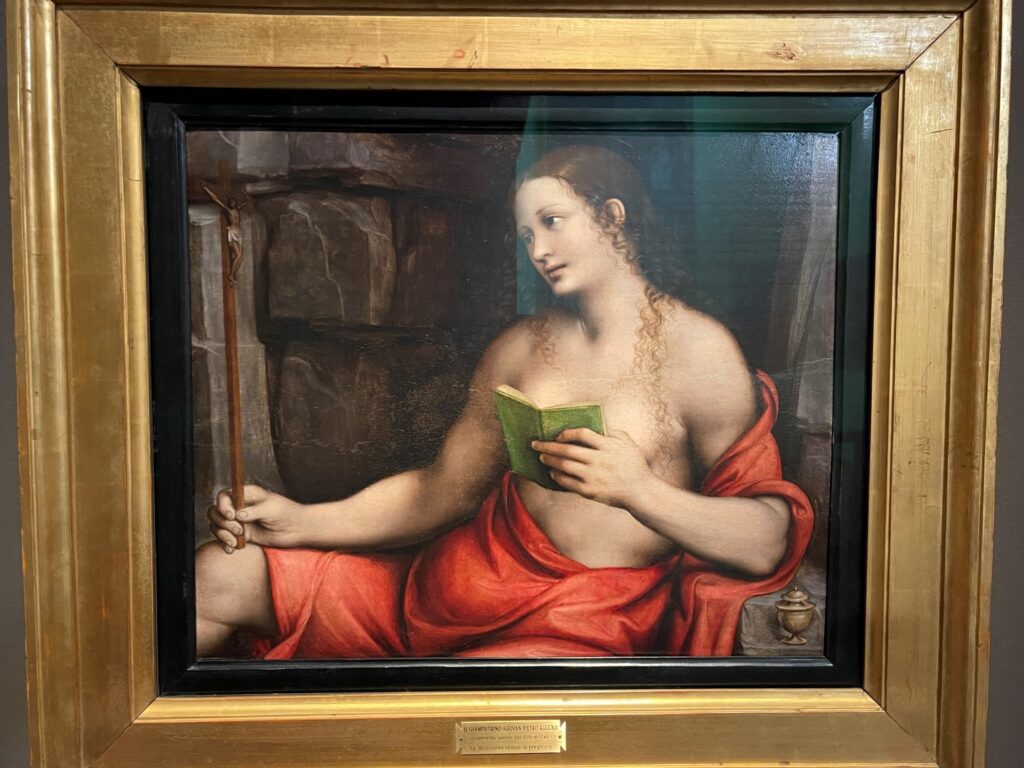
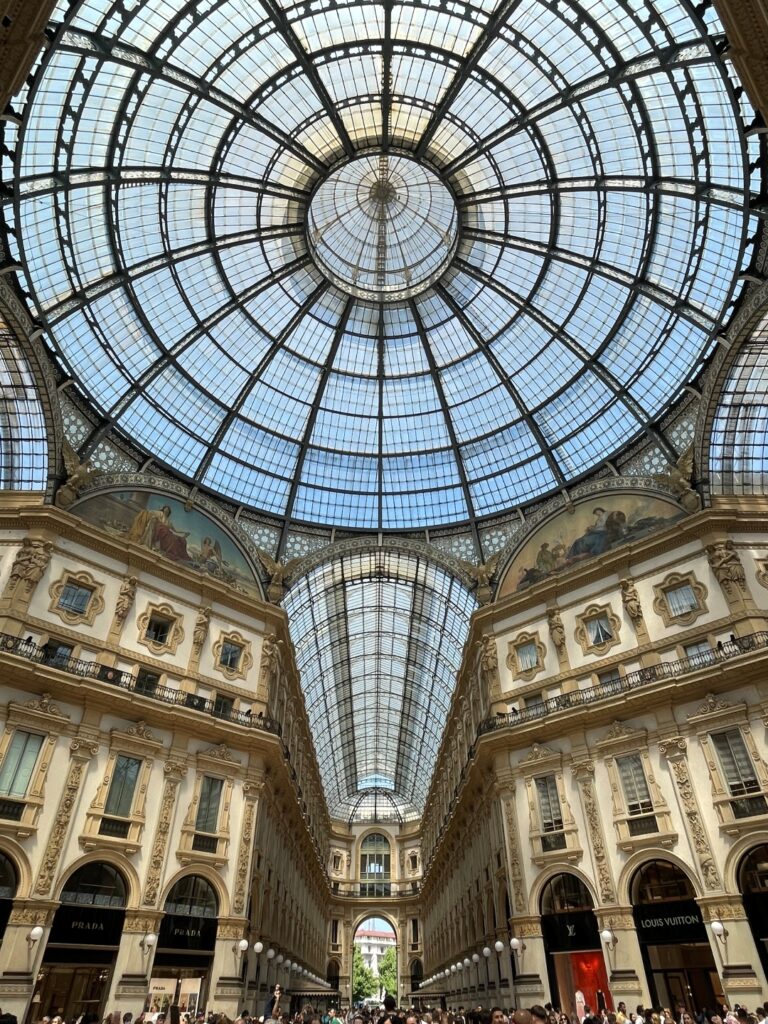
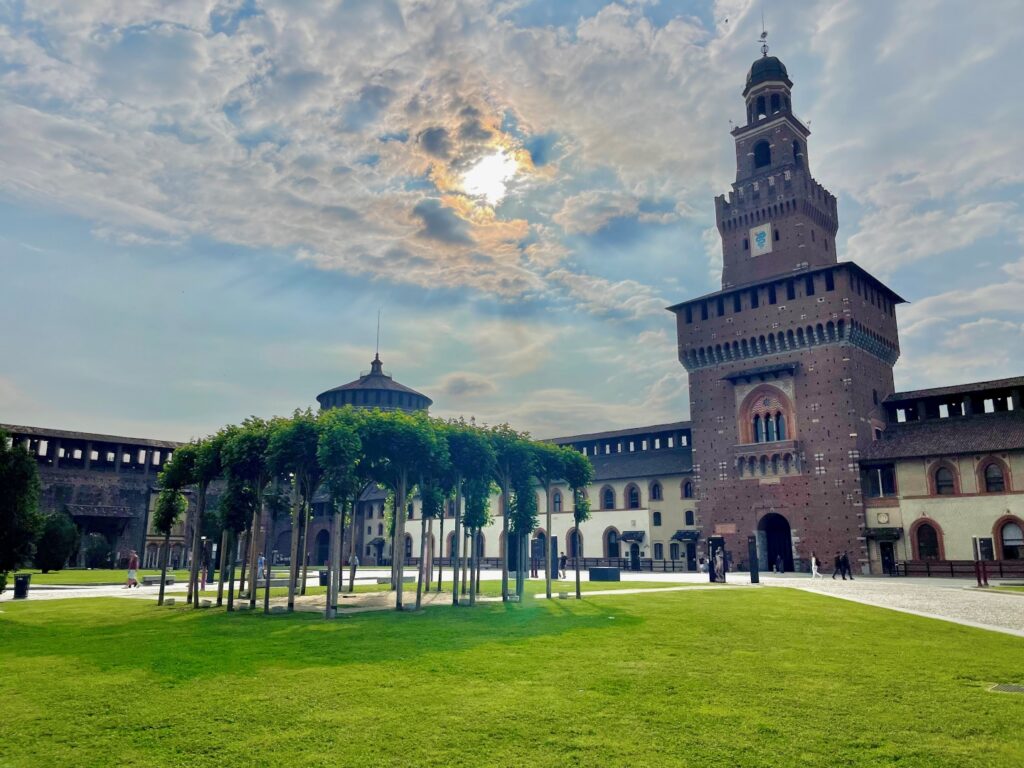
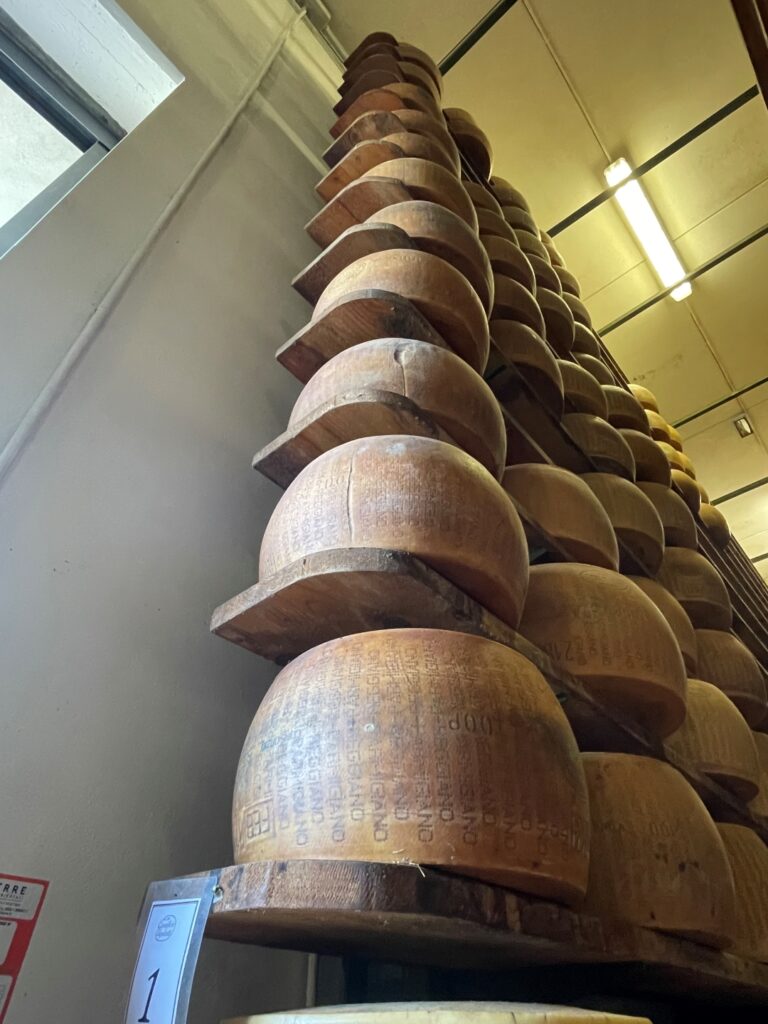
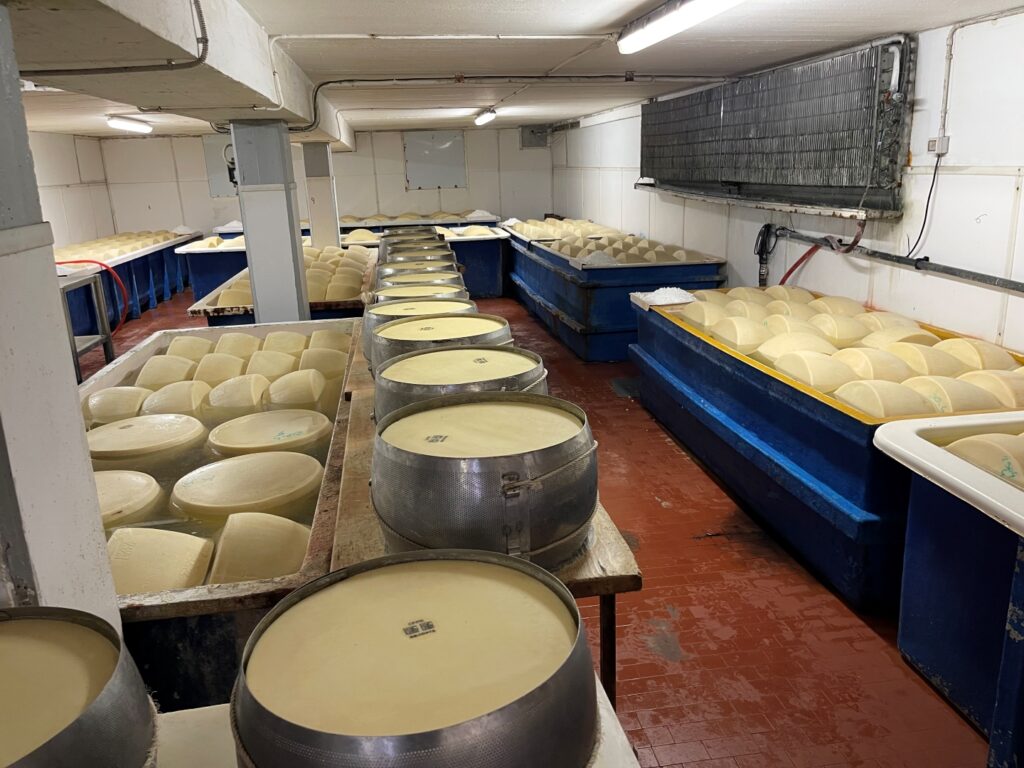
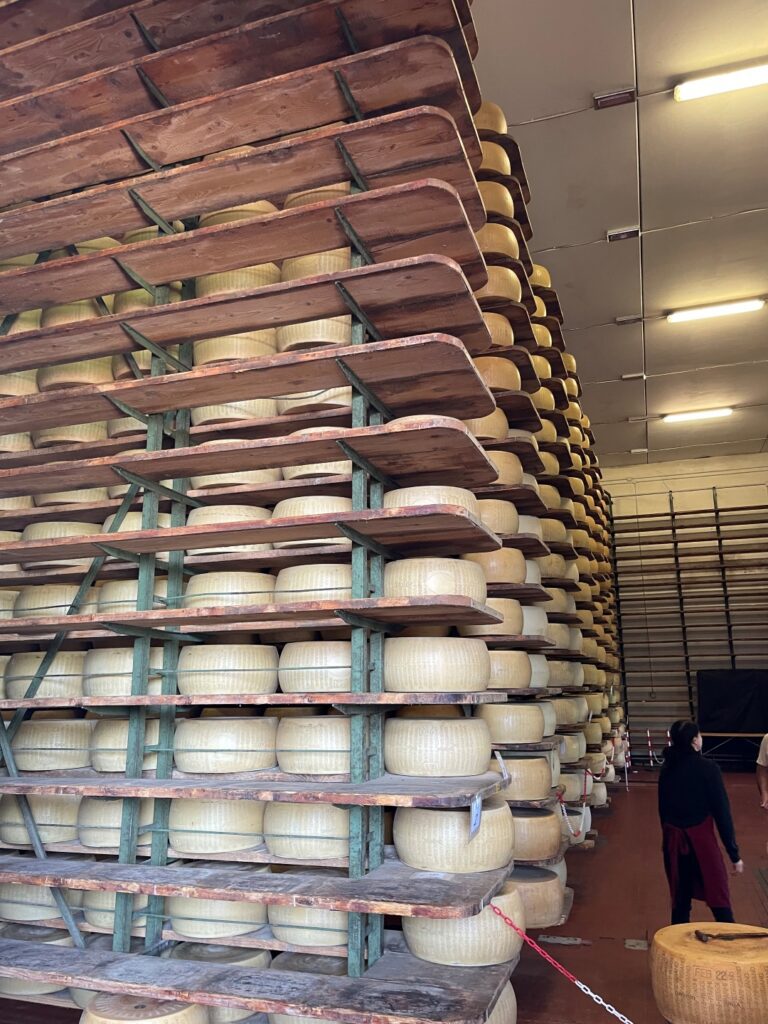
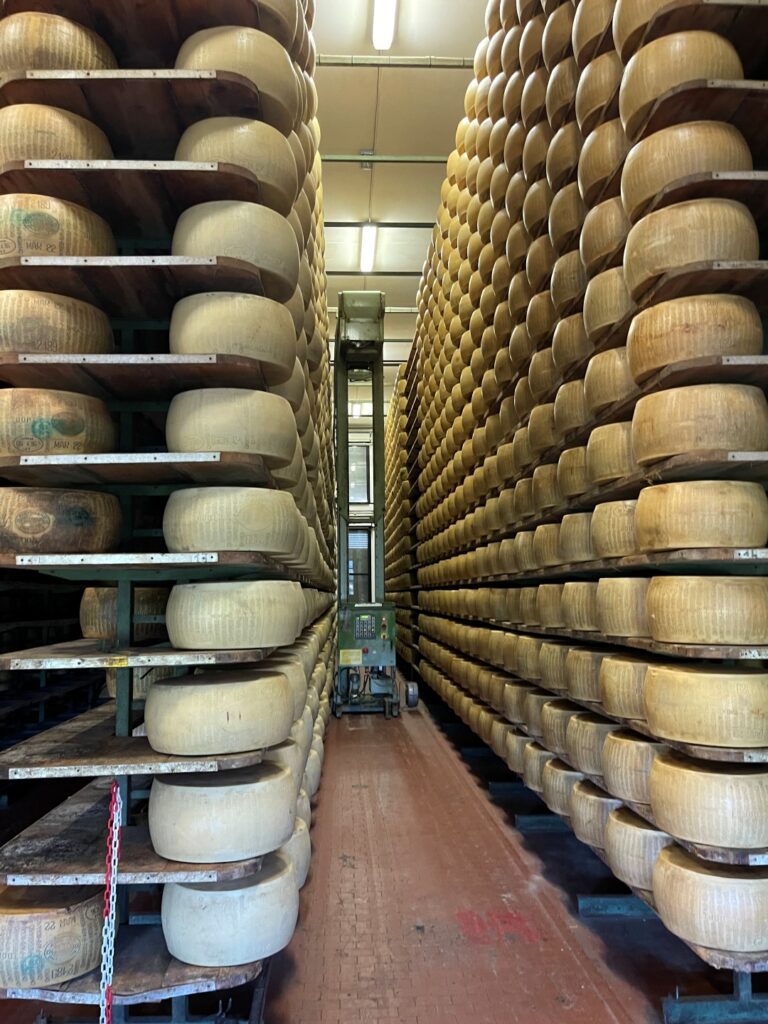
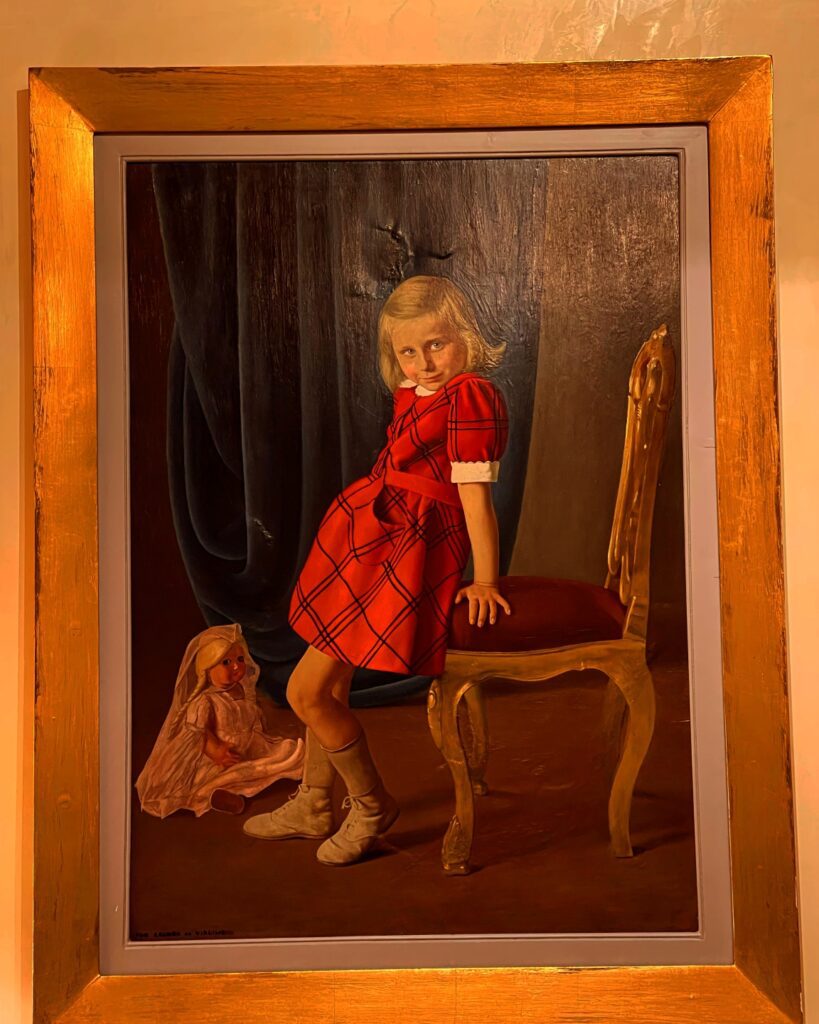
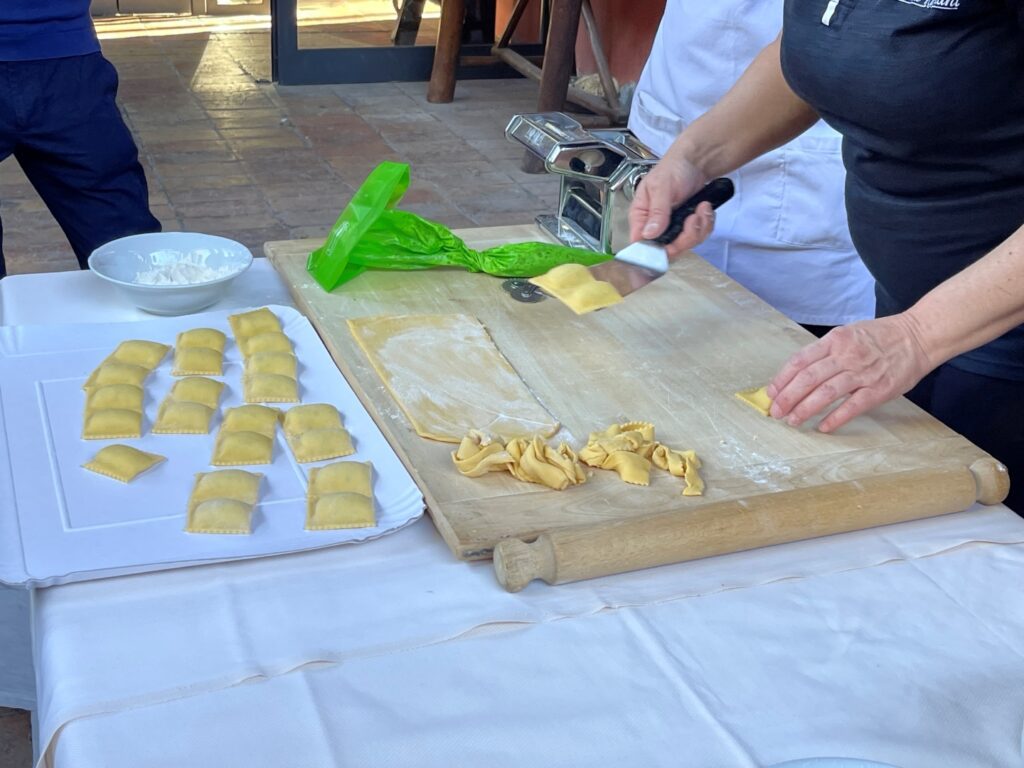
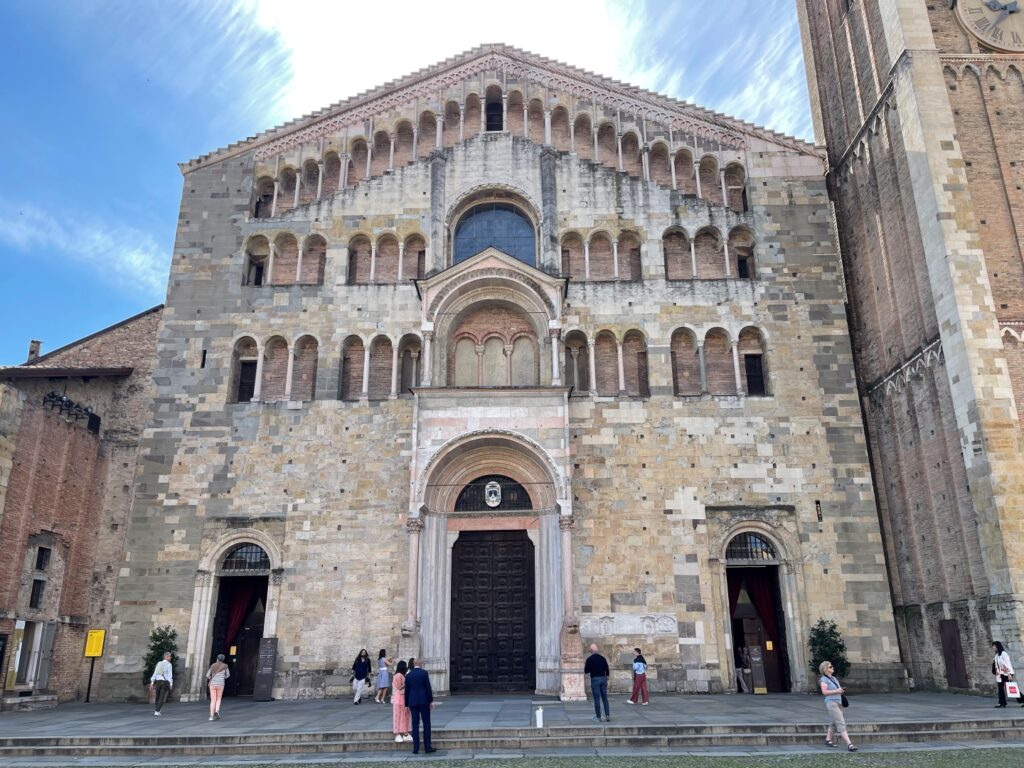
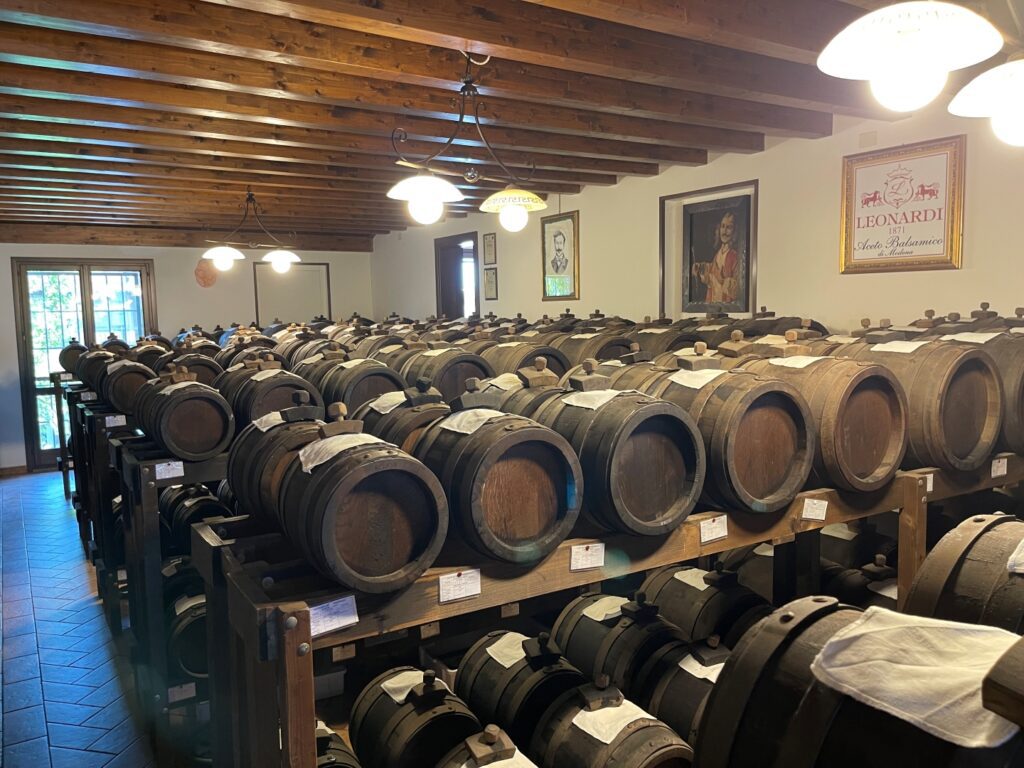


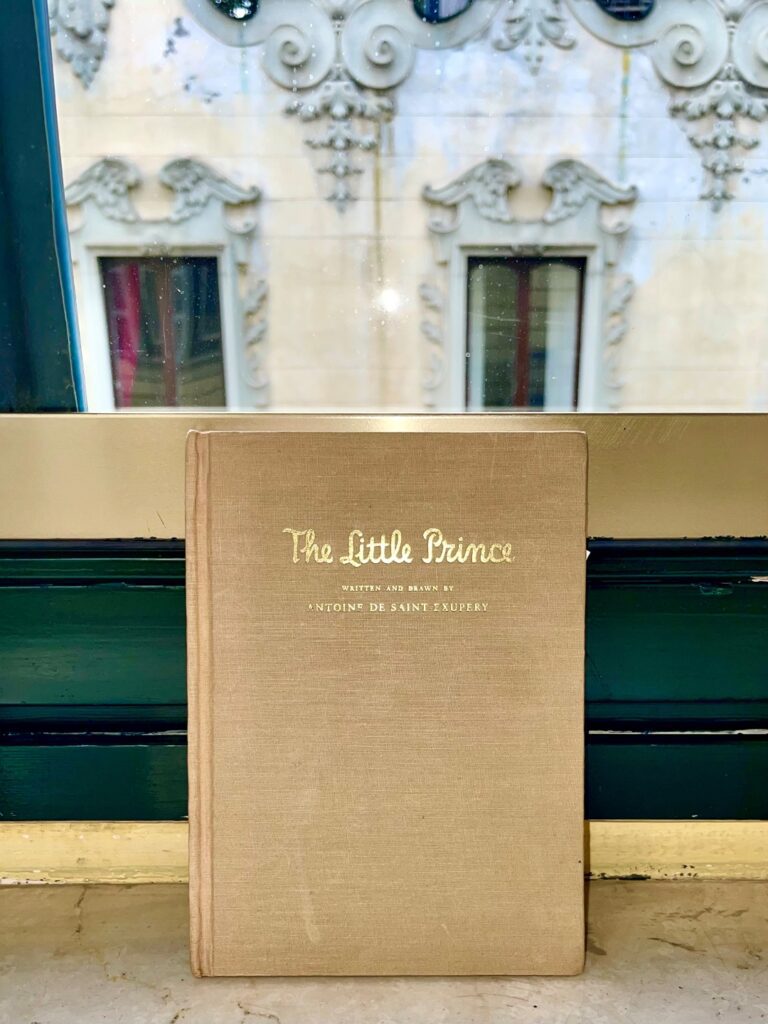
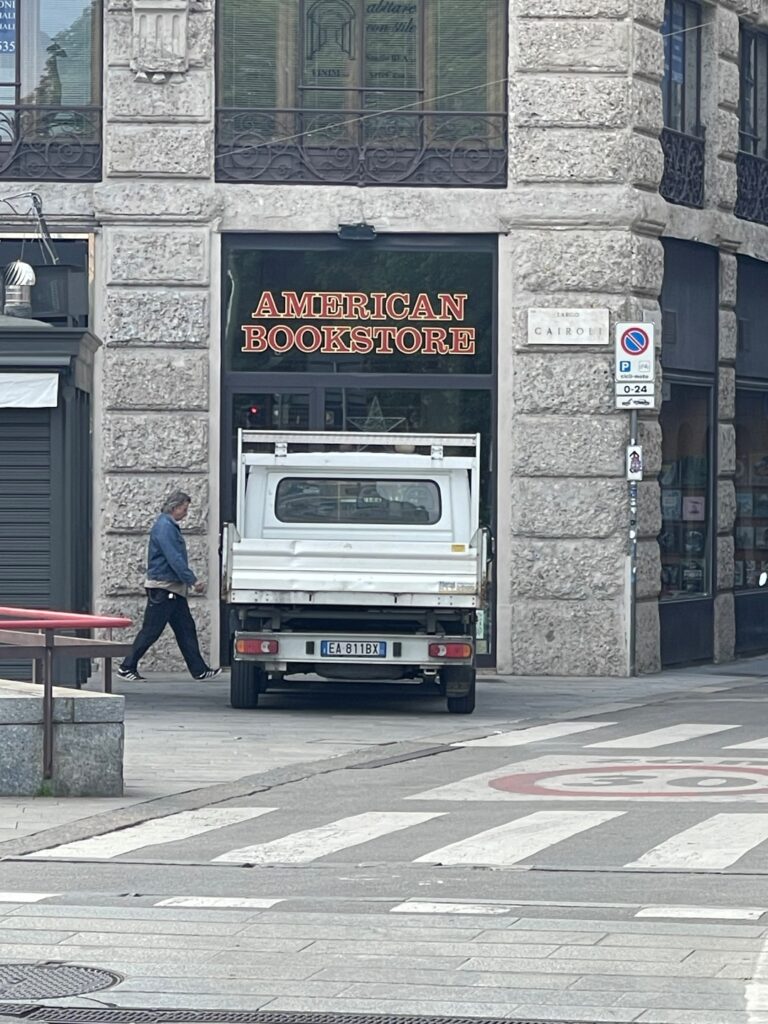
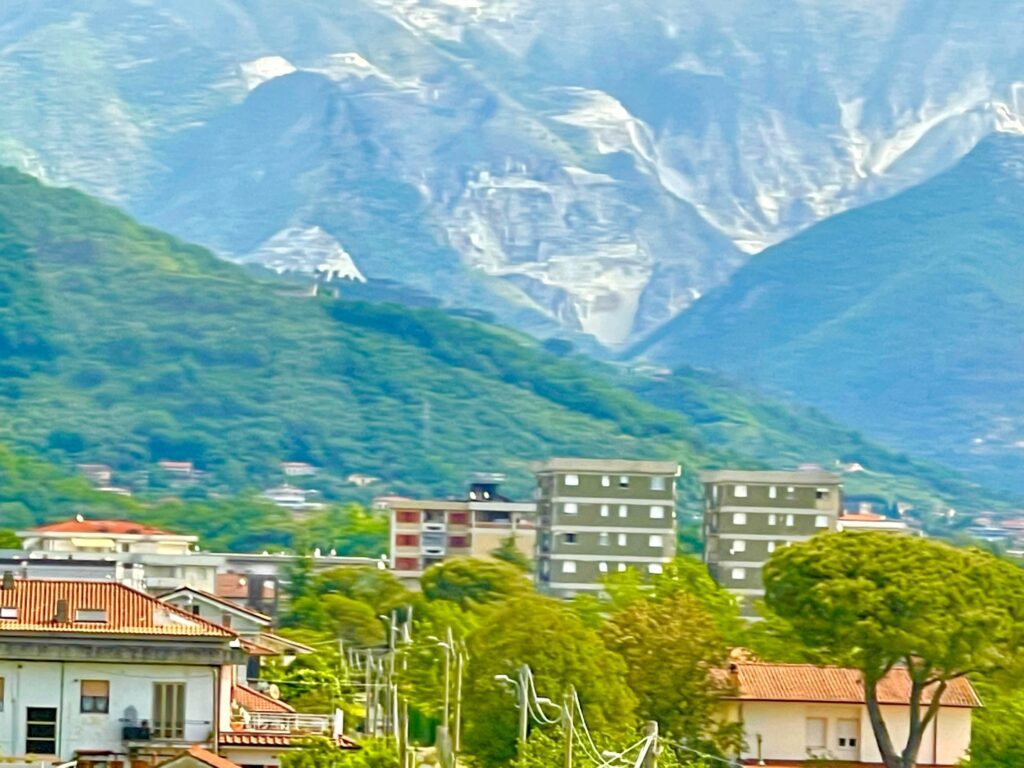
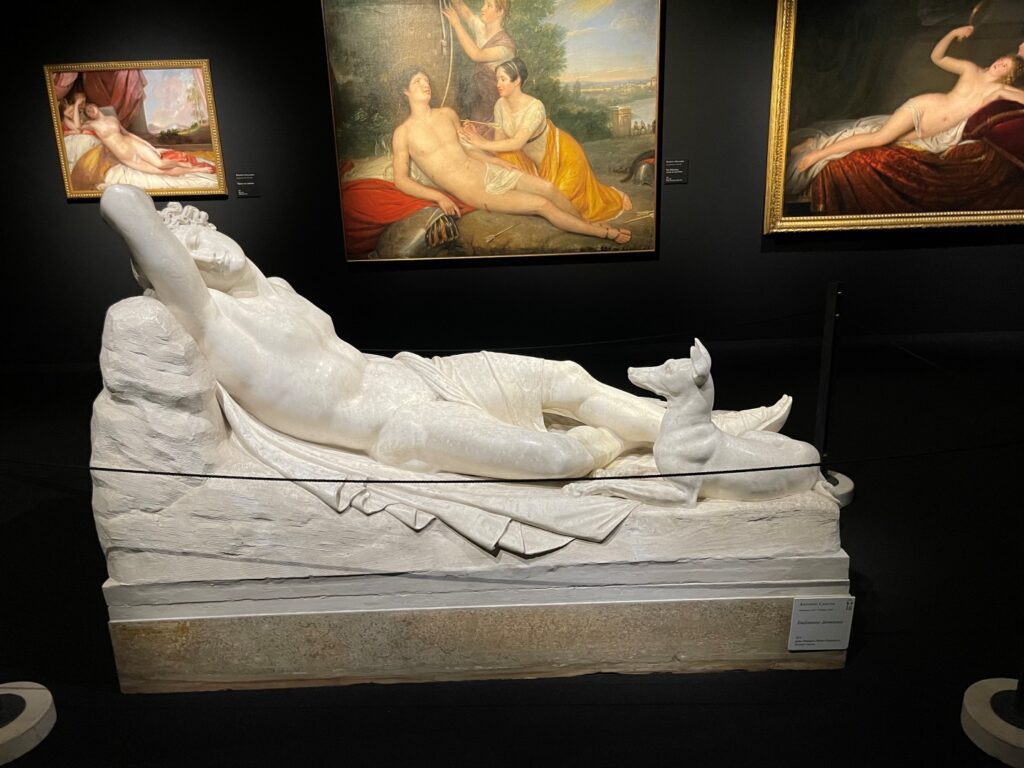
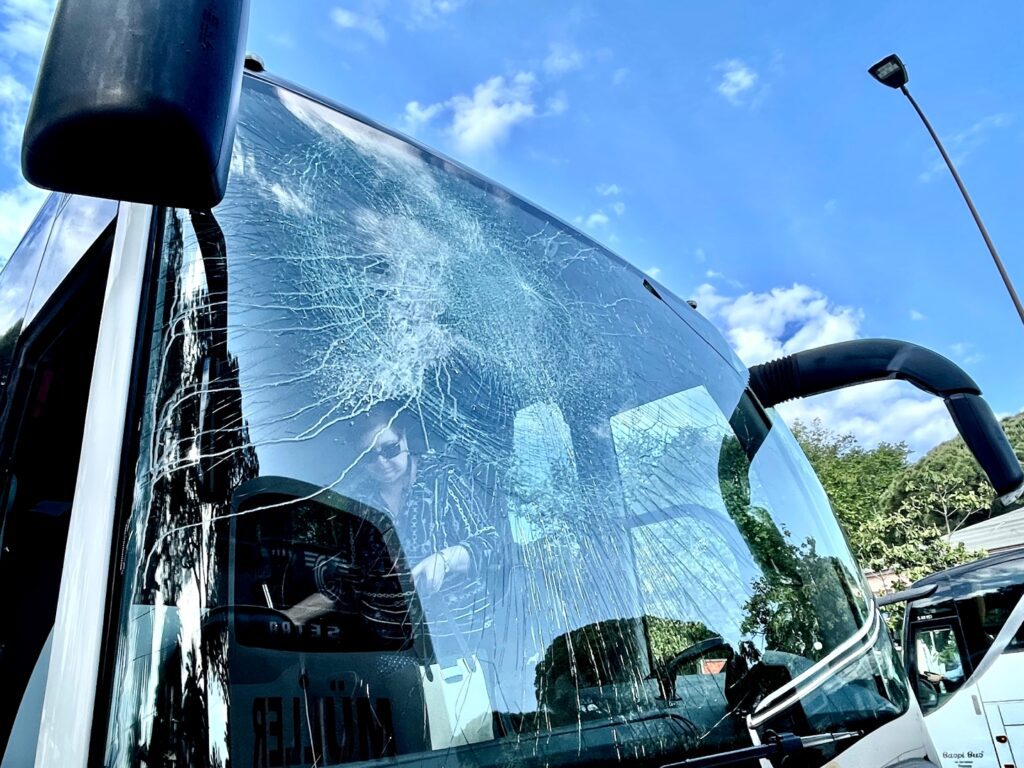
Chuck: Thanks for your reports. I melt with envy almost every time… especially when you go to ITALY. Keep it up!! Ron
Thank you Ron. You’re a great friend and inspiration.
Thanks for writing!
Chuck
“This consciousness is too disturbing”
Chuck, I am going to say this out loud with the back of my hand to my forehead, eyes half closed, whenever I want to take a nap!
I am sorry I do not repond more often. I still begin my Saturdays waiting for the coffee to be ready so I can sit and read your writings before I start my day. Thank you for continuing to do this . You are an interesting and highly functioning person and I find that that to be amazing and inspirational. I enjoy my armchair travel and often times your words will send me to maps to explore the places I have only dreamed of seeing. I just wish you would go to more bakeries and take photos of what you are ordering!! I will be dreaming today of the apricot marmalade tart! Thank you for the pleasure of reading about all the corners of your world.
Thank you so much Linda!
That kind of praise makes it fun and, I hope, useful.
I wish I could find those tarts somewhere local.
Best
Chuck